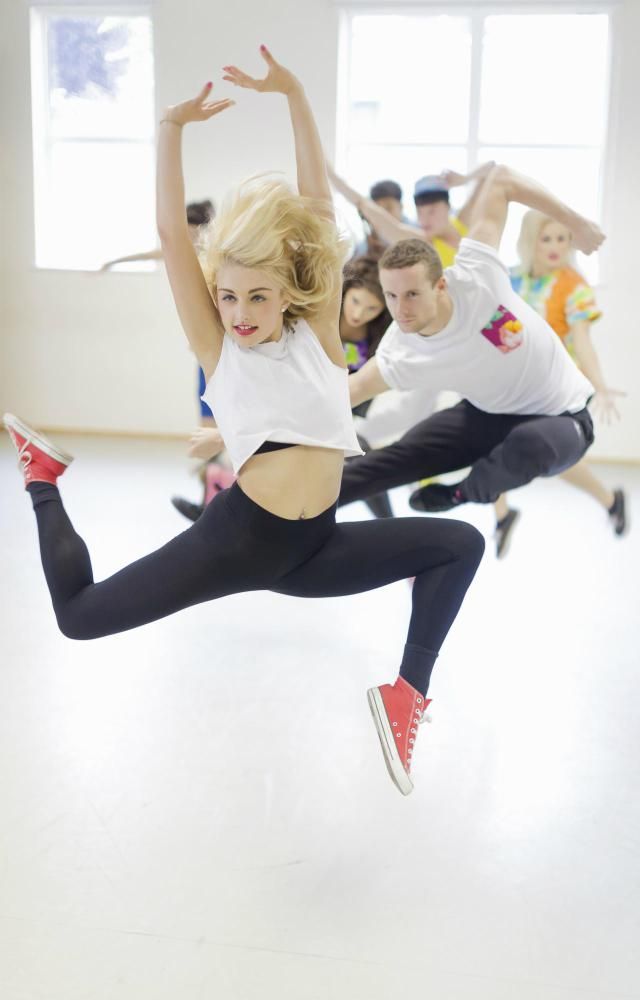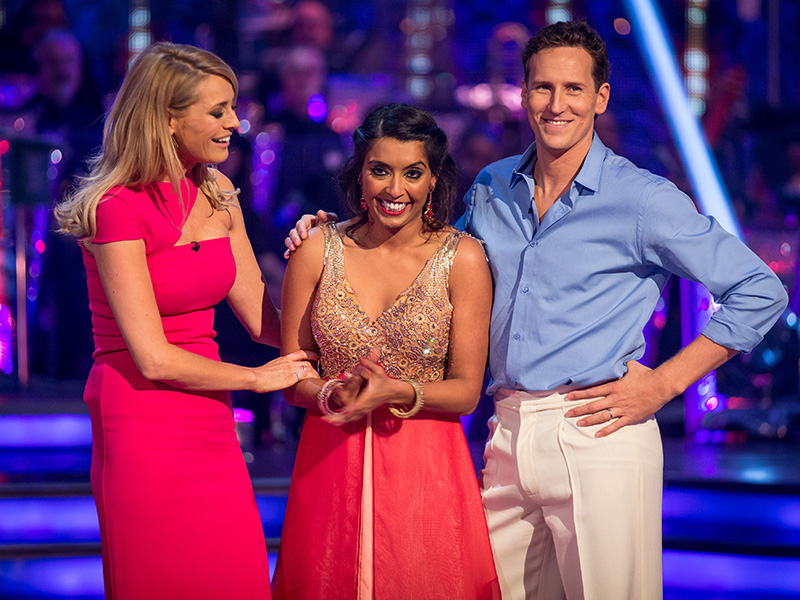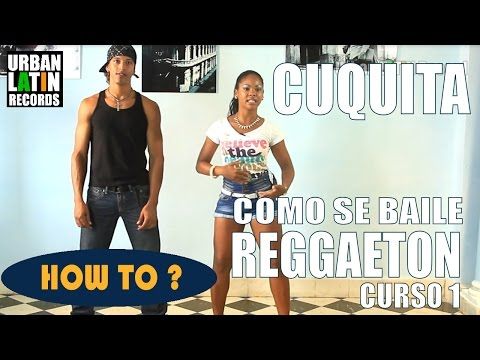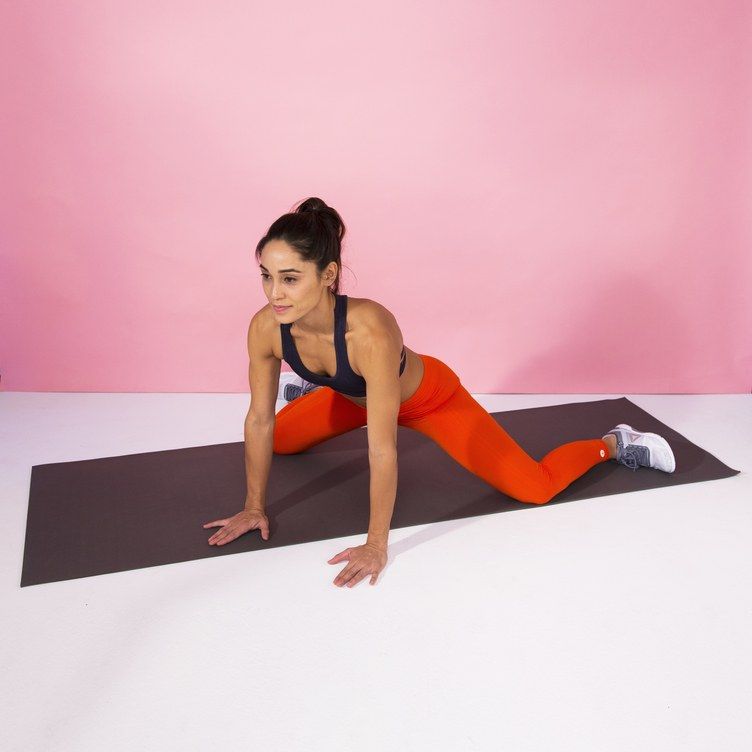How to dance on pointe
Ballet Pointe Technique - How to Dance En Pointe
Pointe technique is one of the most iconic element of ballet. The inspiration for pointe technique is the wish that ballet dancer appears weightless, lightfooted and graceful while jumping and looks lightweight like defying gravity.
Pointe work in classical ballet is formalized by pointe technique. It is performed in pointe shoes. Pointe technique means that ballet dancer performs on the tips of fully extended feet and in this way ballet dancer supports all body weight. Sometimes ballet dancer has to flex the toes to have the perfect alignment of this technique.
Ballet dancer must have great strength and good technique to be able to do pointe work, so a lot of practice is required. Dancers have to dance for a few years before they can start practice pointe technique.
At the age of 8 to 14 years old foot bones begin to harden, so pointe technique should not be practiced before that age to avoid deformed feet. Before 11
years of age bones in the feet are too soft. So young ballet dancers do not begin with pointe technique too early. Physicians can allow young ballet
dancers to start with pointe work if their feet have finished ossified.
Before starting using this technique, ballet dancer has to have straight, balance, turnout and good pull up of the legs. Strength in legs, feet and ankles is developed on the barre, which is a stationary handrail that provides support for ballet dancers during warm up exercises.
Ballet dancers can develop sprained ankles, inflammations, stress fractures and deformities like bunions, bunionettes and dancer’s heel.
Dancing with pointe technique can cause injuries by the lack of cushion, no fitting pointe shoes, lack of accessories and overall improper use of the
technique. To prevent injuries like blisters, calluses, ingrown nails and bruises ballet dancers wrap tape around the toes and use accessories like gel toe
spacers.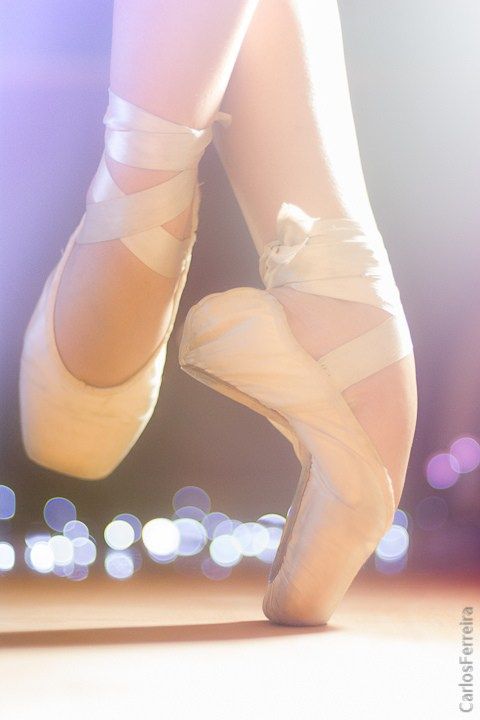
Pointe shoes are made with the specific structural reinforcement. In this way, dancer’s weight is distributed throughout the shoes and foot, and the weight is reduced on the toes. The foot is placed with toes perpendicular to the floor, and the instep of the foot is fully stretched. The flattened tip of the pointe shoe is called toe box.
The perfect pointe technique can be seen visually by ballet dancer’s alignment. When you view the ballet dancer from the side, you can imagine the line passes through the center of the hips through the toes.
Ballet dancer’s foot is in en pointe when it is fully extended vertically, touching the floor, and it can fully support the body weight or not. Pointe work consists of the artistic and mechanical part. Pointe technique formalizes placement of the feet, body alignment and transitioning from and to en pointe.
Transition to en pointe can be done in three methods:
- revelé – toe boxes remain in contact with the floor, and ballet dancer rises slowly rotating the feet downward and then upward until reaching fully extended vertical feet, and it is used for adages
- sauté – the feet in shortly in the air and the ballet dancer springs up and lands en pointe, and it is used for allegros
- piqué – one foot is raised from the floor and the ballet dancer goes with another foot directly in the fully extended vertical foot, and it is used for adages
Learning Pointe as an Adult – Adult Ballet Diaries – learning to dance as an adult
Thinking about learning pointe someday as an adult? Here are some frequently asked questions specifically as an adult ballet dancer – and my experience learning pointe as an adult. Please note that this is not meant to be technical advice. Please consult your ballet teacher/professional before using any information on this page.
Please note that this is not meant to be technical advice. Please consult your ballet teacher/professional before using any information on this page.
Learning Pointe as an Adult
The other day I went for open classes as my studio is on holiday and I spotted some of my long-time adult ballet dancer friends. After a few, “Hey, how are you? I haven’t seen you for a long time! Where do you dance now?”s I noticed that they are going back to Adult Beginners classes and …. to my surprise, two of them wearing pointe shoes.
I couldn’t help but notice how brand new their pointe shoes were. Obviously they haven’t done too much pointework. I later learned that they decided to try going on pointe, hence, taking the slower paced classes. They then asked me a few things about pointe work since I had a little bit more experience in pointe than them.
That inspired me to write this post.
I’ll start by addressing a few frequently asked questions:
Am I too old to start pointe work?
No. Especially if you’re an adult ballet dancer.
Especially if you’re an adult ballet dancer.
Although, I must say that, that is not the right question. ‘Are you ready for pointe work?’ should be the question you should ask yourself and your teacher.
You’re not too old, if you’re 15 and above. If you’re 70, you can still do pointe work, but you must go in with your eyes wide open, understanding your personal risks. But more about that later.
Will I be able to go on pointe?
Most probably yes.
The crux of the matter is “WHEN”.
Although, there is a small minority of people that can’t go on pointe no matter how much strength or technique they’ve gained. It could be their ankles are way too flexible or too stiff.
When I say too stiff, it means that you can’t form a straight vertical line from your shin to toes when you’re pointing your ankle. So far, I haven’t met either types. I’ve met more people with stiff ankles that became sufficiently flexible enough over time to form that ‘vertical line’
When will I be able to go on pointe?
Let me just start by saying there are many theories of teaching pointe work, but what I’m able to write is the general consensus of ballet professionals.
You will be able to go on pointe if you have sufficiently build up your strength and technique.
There are several am-I-strong-enough-for-pointe tests. One of which is to be able to execute a grand plié in the center, with correct technique of course. The other one is to be able to do fondu on demi pointe in the center. This is for strength alone.
Most people are concerned about strength – before going on pointe. Personally, I think technique is most important, more important than strength. Simply because, you can build up strength for pointe work by doing thousands of releves at the barre on pointe.
Technique is key to preventing injury.
So what if you can ‘stand on pointe’? It doesn’t matter because ultimately, you want to dance on pointe. You’ll have to pirouette on pointe someday. If you are not pointing with 100% energy, or have established a good habit of straightening your knees, you’re going to hurt yourself in the long run, wearing out your knees and inviting all sorts of complicated knee and back problems.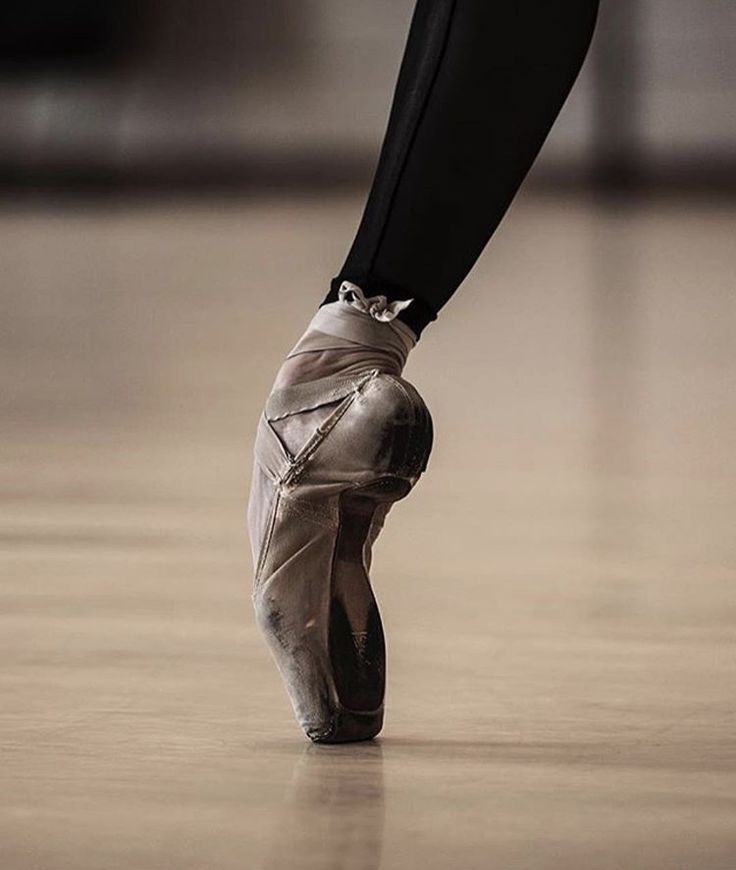 Thus, technique is THE ULTIMATE IMPORTANT thing to establish before going on pointe.
Thus, technique is THE ULTIMATE IMPORTANT thing to establish before going on pointe.
Yes, you can take some risks by going on pointe, if your technique is sufficient. Pointe work in general is less dangerous for adults than young kids whose feet are still soft and malleable. However, if you’re not careful, you may twist or break and ankle, suffer an elbow injury due to a fall, and if you’re older, you might fracture a hip. These are surface injuries. The more dangerous ones are knee and back problems that surface after years of doing the wrong things.
Feet take time to learn to point fully. (My teacher is never satisfied by how hard I point!)
Straightening your knees to its maximum also takes time to establish (Another irk that I irritate the hell out of my teacher)
Your metatarsals need to be flexible to ‘lick the floor’.
All these things I’m still working on – though I’m already up on pointe.
Thus, having a good teacher is crucial! Because you need her guidance and her eye to check for mistakes and dangers.
Should I go on pointe?
The common answers that you find on the internet and books are “you must be strong enough”, “you must be dancing for at least 3 years” or “you must be taking at least 3 classes a week”.
For adult ballet dancers, I think the crucial questions I would like to ask is, what kind of classes are you taking? What kind of school do you dance in? Who is your teacher?
My recommendation is that you should have a good teacher, one who is particular about technique (as explained above), and that the teacher should see you at least 3 times a week, and most importantly, know your body well. Is he/she interested in your success and safety?
If the answer is yes, you can approach your teacher about pointe lessons, or ask to wear pointe shoes in class.
This is easier to achieve in a small, intimate studio, rather than a big dance school with lots of different classes and different teachers. Of course, if you’re able to ‘follow’ one teacher, and become familiar with him/her, that situation is also possible.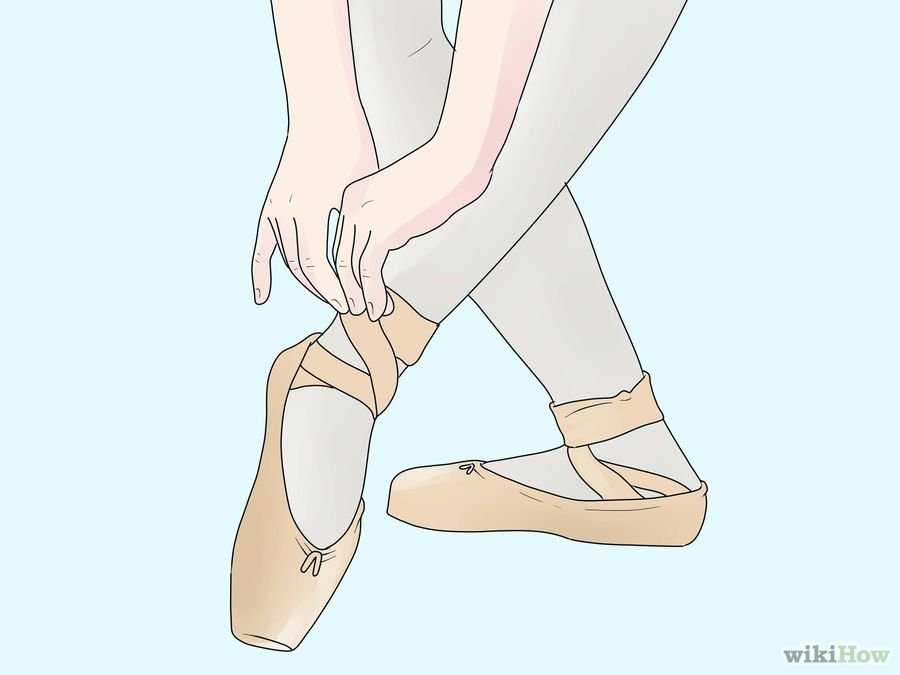
That’s the most important consideration – a good teacher’s eye and guidance for proper technique.
The second very important consideration is – how good is your technique?
This is the problem for most adult ballet dancers, even those who have been dancing for 5-10 years. Most of them go to ‘cold’ studios, taking lots of open classes and unfortunately, very seldom are able to establish a good relationship with a teacher – good enough to care about their safety and progress.
Thus, that is why it is sometimes better to risk humiliation and join a dance school which teach syllabus work, enter their students for exams – of course, you’ll be dancing with youths or teens more than half your age, and in better form than you, more flexible and leaner too. It really depends on what options you have and how much you want it.
In a studio where you have a good learning relationship with your teacher, he or she is more capable of helping you with your weakness in technique and you have a better chance of progressing as you work through them.
Though, it is more common to have this in a small studio, not all small studios are good because not all teachers in them are good (as with in the big studios).
- Not straightening your knees fully
- Not pulling up
- Not pointing your feet fully (and with lots of energy to spare and ‘come out of the ends of your toes’)
- Wrong ballet posture (with your popo sticking out)
- No emphasis on strength or balance or control – instead just focusing on the ‘moves’.
Dancing on pointe for the first time may feel so foreign, that you might ask why don’t we all start learning ballet using pointe shoes?
However, as you become more familiar with your pointe shoes, you’ll realize that pointe work is simply an extension of all ballet technique…yes, everything matters, from that plié to that tendu in those canvas ballet slippers.
Do lots of releves at the barre.
When you go up, don’t jump up…slowly rise up. This builds strength.
When you come down, don’t plop down. Slowly lower when you come down. Think ‘up’ as you lower yourself. Think of somebody pulling the hairs on the top of your head as you lower down. This builds control and increases the flexibility of the metatarsals.
Lifting your weight ‘off’ yourself on pointe
When you’re on pointe whether it is at the barre or in the center, lift your body weight off yourself using your core strength. Just as we stand in first or fifth position at the barre, we continue to stand very tall. You cannot just rely on ankle strength.
Some teachers call it ‘pull up’. If we allow ourselves to sink into our hips and sit on our legs (like the rest of the non-ballet-dancing population), we’re going to add more stress on your knees and ankles.
Ensure that your ballet posture is correct.
People looking at you on the side should be able to picture an invisible straight plumb line. Stand with an open chest, keep your ribs in, and your pelvis in a neutral position.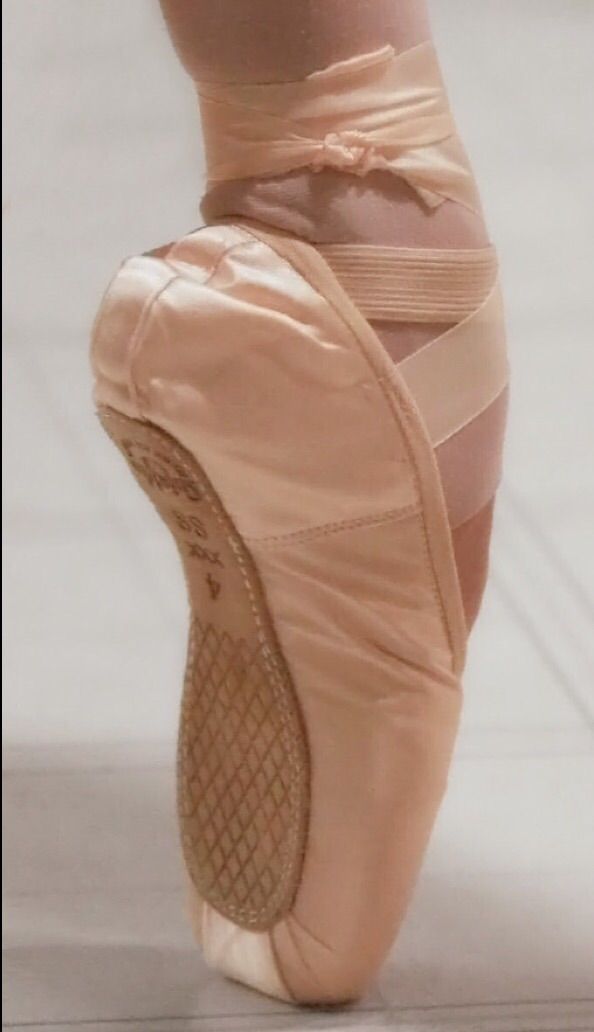 This is all fundamental ballet technique, whether you’re on pointe or not. That is why I say technique is most important!
This is all fundamental ballet technique, whether you’re on pointe or not. That is why I say technique is most important!
Pointe fully …and some more!
You should be 100% pointing even though it is harder in pointe shoes!
It is very easy to relax into a semi-pointing state. Thus, good ballet technical habits should be established first, otherwise it is very difficult to progress in pointe work later on.
Ballet dancers, teachers and other professionals argue a lot in ballet – what is right, what is beautiful, what is wrong, what is ugly, what should go first, how should this step be executed, where the foot should be placed etc etc etc.
Similarly, there are so many different theories about who should learn pointe, when should pointe be learned, what is dangerous and what is not…
Some teachers are overly concerned about safety, some seem to not care at all.
Unfortunately not all teachers know how to teach it right. And how would you know if your teacher is teaching pointe correctly? You can probably gauge by the kind of corrections you get from him/her.
In fact, I think the teacher teaching pointe has a bigger responsibility because as a teacher, they obviously know more than the student.
The way the teacher teaches pointe is vital to a student’s progress and safety.
There are many teachers who seem to do crazy things with teaching pointe – but some really know what they’re doing and they know their students’ feet well. Some like to separate the students into groups to do different exercises, for instance those with strong ankles from the weaker ones, and this also depends on the natural flexibility of their ankles.
Those who teach just because their students insist on going on pointe must learn how to pace and control the class. She could start off with
5 minutes on pointe and moving on to 20 minutes so on and so forth. In that 5-20 minutes, most of it would be doing endless releves to build up strength.
Of course there are teachers who just don’t care. They just let anybody in the class. OR there are students who simply insist on going on pointe.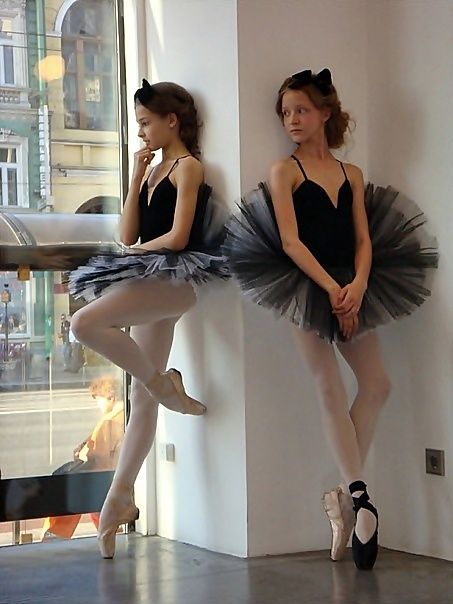 I’ve taken classes in New York City where students who has never done ballet before pay for a pointe class and arrive with pointe shoes in hand, with no ribbons sewn. They then insist on taking the class. The poor teacher had to get some elastics and ask them to do releves with two hands holding on to the barre. She had to move on to give class because there were about 10 of us just waiting for her to get started.
I’ve taken classes in New York City where students who has never done ballet before pay for a pointe class and arrive with pointe shoes in hand, with no ribbons sewn. They then insist on taking the class. The poor teacher had to get some elastics and ask them to do releves with two hands holding on to the barre. She had to move on to give class because there were about 10 of us just waiting for her to get started.
Thus teaching method, a teacher’s watchful eye and emphasis on the correct technique are the most important things to look out for when it comes to selecting a pointe ballet teacher.
While ballet teachers teaching adults pointe work has a fair share of responsibility, ultimately, you as the adult have to take responsibility and decide for yourself. You have to understand the full risks of learning to go on pointe.
My personal take: I think as adults the risks of learning pointe are
- slipping (because of the lack of control and familiarity especially if technique is very weak
- not knowing how to choose the right shoe/fit for pointe
- bunions
- fractured/sprained ankles (from falling and from the lack of strength)
- knee & back problems due to poor/wrong technique
- fractured hips (from those who are older and are susceptible to fall)
- muscle injuries due to over strain/pulling
- excessive tension in the muscles due to compensating for weakness.
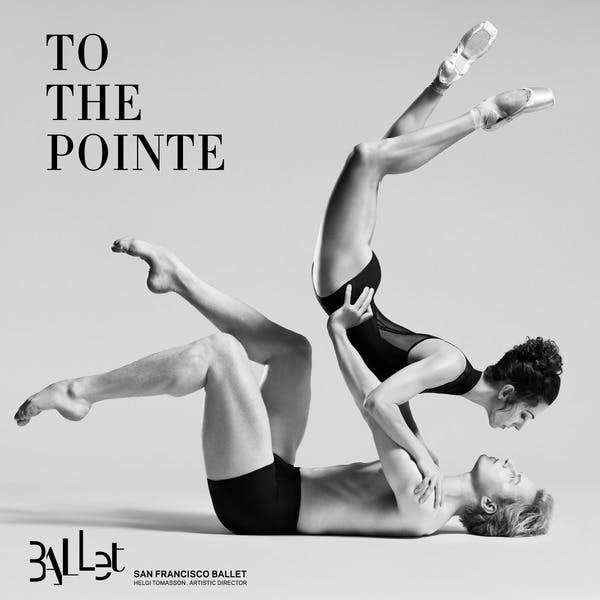
Of course, there are those who will have differing views from me.
I started pointe when I was in my teens, therefore to come back to it again wasn’t so foreign for me. However, I have some experience with a few different teachers with different views. One wanted to put me on pointe after being back to ballet within 4 months, another one would not let me try at all because of my insufficient abilities to make my ‘knees more-than-straight’ and pointing with 100% energy. Another teacher asked me if I’ve been learning pointe for more than 6 months before letting me attend her half-an-hour pointe class. One teacher I know didn’t care if people just wore pointe shoes in class.
My final teacher separates the class into 3 sections. One group with two hands on the barre, the second group with one hand at the barre and the rest of us in the center. This is after the barre warm-up in pointe shoes.
Personally, I’ve found that learning to control your body and feet is one of the hardest things.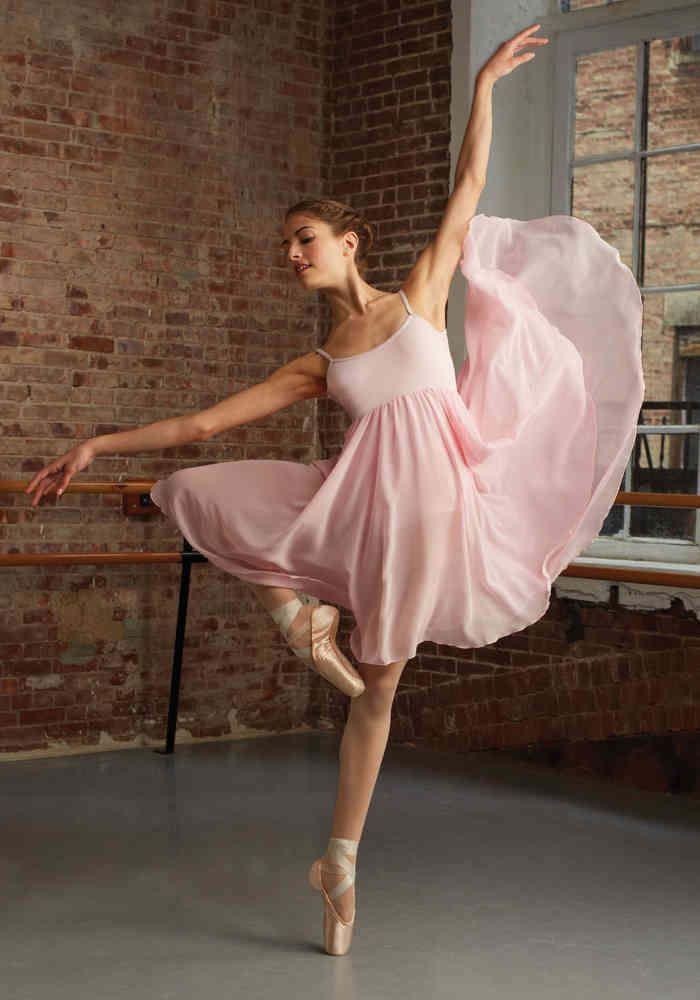 You have to develop a sort-of sensitivity to your feet and metatarsals especially.
You have to develop a sort-of sensitivity to your feet and metatarsals especially.
You actually rely a lot on a strong core, and you have to activate your entire body to lift you ‘off your feet’ rather than rely solely on ankle strength.
My struggles? I tend to plop down on pointe rather than going through demi-pointe. I don’t hold myself all the way down. Also, I need to plié
more on the way down on pointe, rather than letting my heels touch the floor first then plié.
Whatever you struggle with in ballet slippers, whatever wrong technique or weak technique you may have, it is magnified on pointe.
For instance, I can manage my pirouettes just fine (not perfect) but I have this tendency to lean back too much because in actual truth, I struggle to keep my pelvis neutral (due the tightness of my lower back) throughout ALL my center work. Therefore, when turning on pointe, I have the tendency to fall backwards.
I can manage a double or triple pirouette sometimes on ballet slippers, but can barely make one nice clean pirouette on pointe.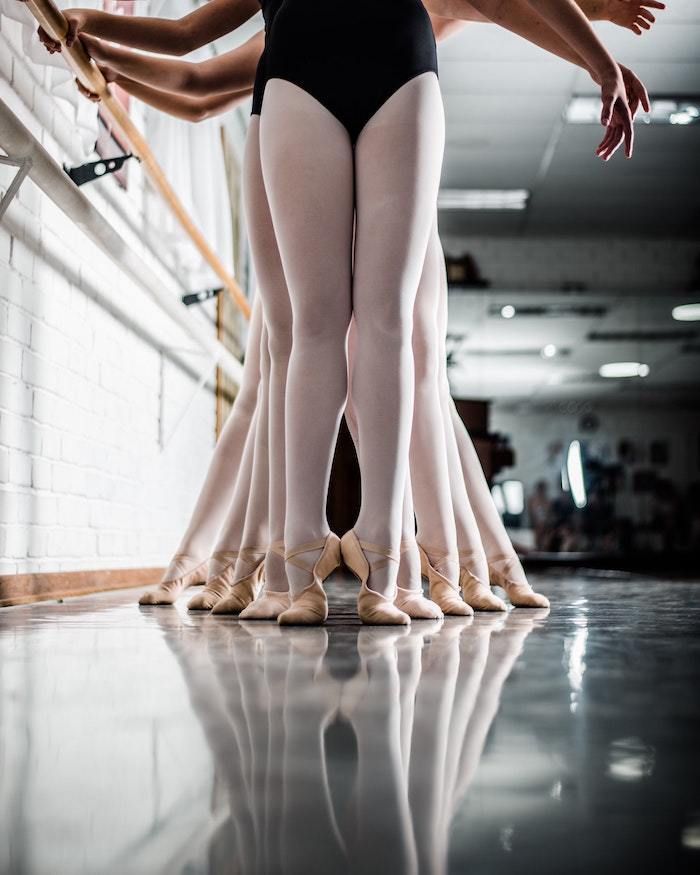 I can also tell that my get-by-spotting does not work on pointe.
I can also tell that my get-by-spotting does not work on pointe.
I have relative ease doing pique turns on demi-pointes or ballet slippers, and thus I am confident doing them with them too on pointe.
As for strength – they are coming along nicely because we always start pointework with lots of releves and tendus. I also take 3-4 classes a week, and that really helps building up strength without thinking about it.
As for pointe shoe fitting, I was fortunate to get pointe shoe specialists to fit me. I was traveling to New York and had visited Grishko and Gaynor Minden and had booked pointe-shoe fitting appointment. My first pointe shoes were bought in Bloch, in Australia.
I know not everyone gets this opportunity but I would advise against buying them online, especially if they are your first pair. I know some shops overcharge but if they have someone who knows, it is worth going. With that saying, not everyone who works in the retail shop can fit well! Best to ask your dance teacher along.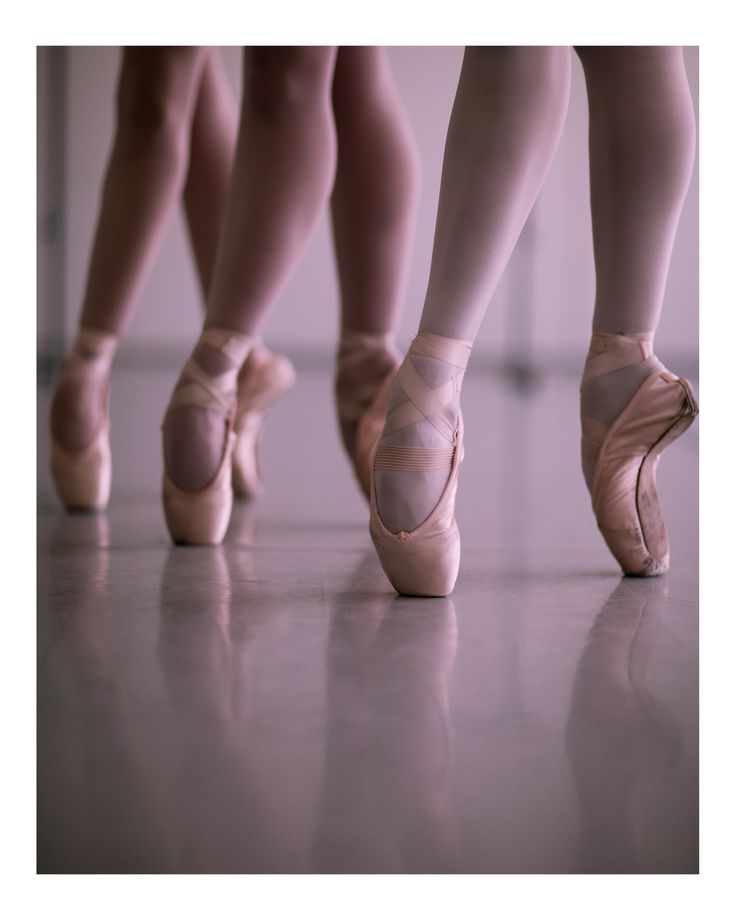
The other struggles I had learning pointe as an adult ballet dancer is really, to find an adult pointe class. They are so rare because of all the requirements for pointe: commitment to dancing and a good teacher, most of all. And of course, in most countries the majority of people learning ballet aren’t the adults.
Hopefully that will change.
Alright, that’s all. This is one long article about learning pointe as an adult ballet dancer. Please feel free to ask any questions! I know that some of you may not agree with me here, but anyway, your comments are always welcomed. We can always learn from each other!
Thank you for reading ‘learning pointe as an adult ballet dancer’!
How to dance pointe | Dance School BK Dance
Ballet is a unique type of classical dance. People who practice ballet are very slender and seem fragile and weightless. However, in reality, they have very developed muscles of the arms, legs, and also the back, for which a lot of effort and years of training have been spent.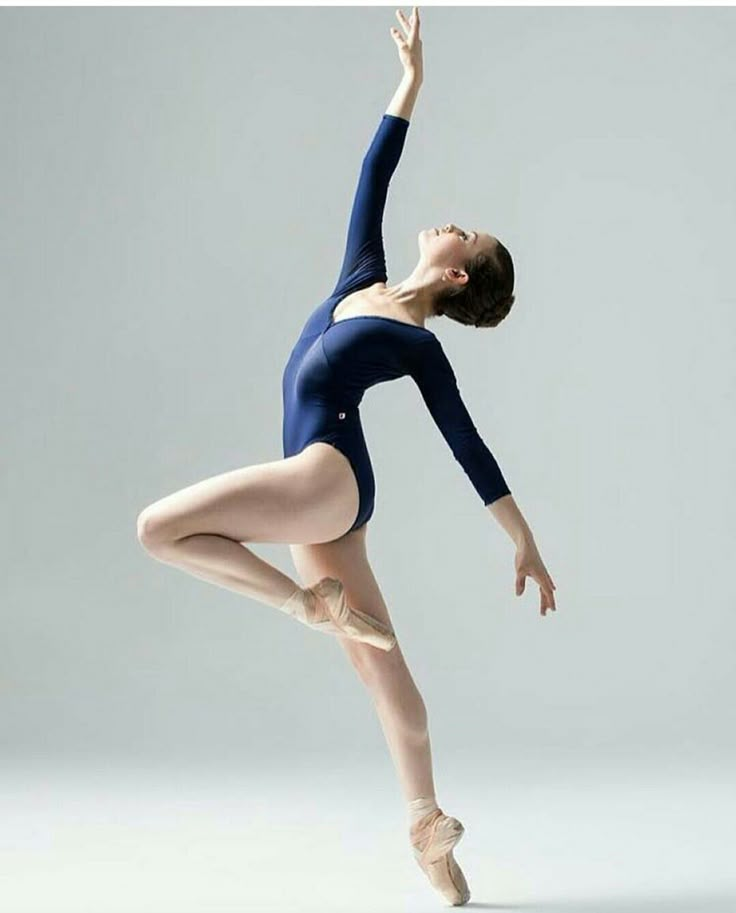 Very often legs, in humans. dancers are stronger than athletes, this is due to the fact that they work not to achieve records, but for endurance. Dancers become so accustomed to calluses and pain in their feet that they stop feeling them. The constant wearing of pointe shoes leads to the fact that the legs and fingers of the dancers are deformed.
Very often legs, in humans. dancers are stronger than athletes, this is due to the fact that they work not to achieve records, but for endurance. Dancers become so accustomed to calluses and pain in their feet that they stop feeling them. The constant wearing of pointe shoes leads to the fact that the legs and fingers of the dancers are deformed.
How to prepare for pointe dancing
A person who decides to take up ballet dancing must be prepared for grueling training. and possible health problems. Each occupation has its positive and negative sides.
A person of any age can learn to dance en pointe. Before you start using this accessory, you need to learn the main dance positions without pointe shoes. Ballet dances include five basic provisions, on the basis of which all further steps are taken. So, initially it is necessary to master the basic basics of the art of dance. In addition, you need to perform additional exercises to train the legs. You should also pay special attention to the muscles of the back, because during the dance the main load will go to the back.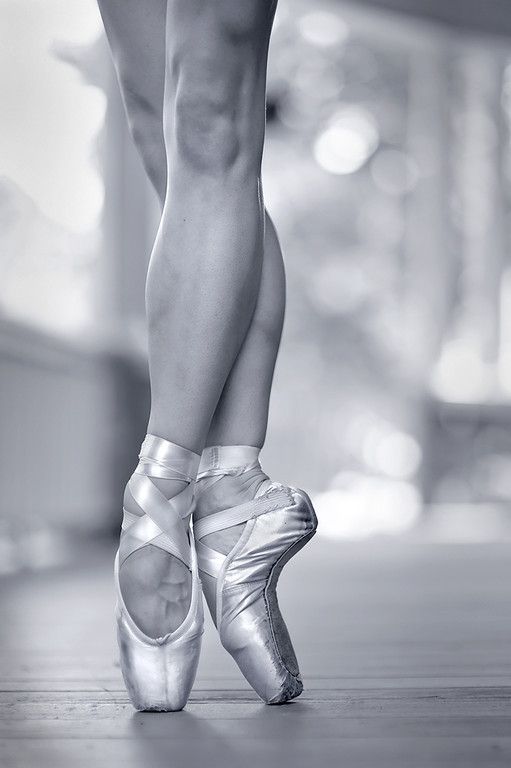
Basic movements to help you master pointe shoes
Only after you have learned all the basics of choreography, trained the muscles of the back and legs, you can start learning to dance using pointe shoes. To do this, it is important to learn to keep balance. Standing on your fingertips, you need to balance using various postures.
Having taken the first position, you need to rise on your toes. It is important to ensure that the bent leg is perpendicular to the floor. Repeat this movement with each leg in turn.
Another exercise that will help prepare you for pointe dancing is as follows: you need to take a sitting position with legs folded and stretched forward. Then make movements with the feet, fingers so that the rest of the legs do not strain.
Having warmed up the feet well, you can start dancing on pointe shoes, it is important that the leg is perpendicular to the floor, otherwise there will be problems with maintaining balance, as well as with the back and feet.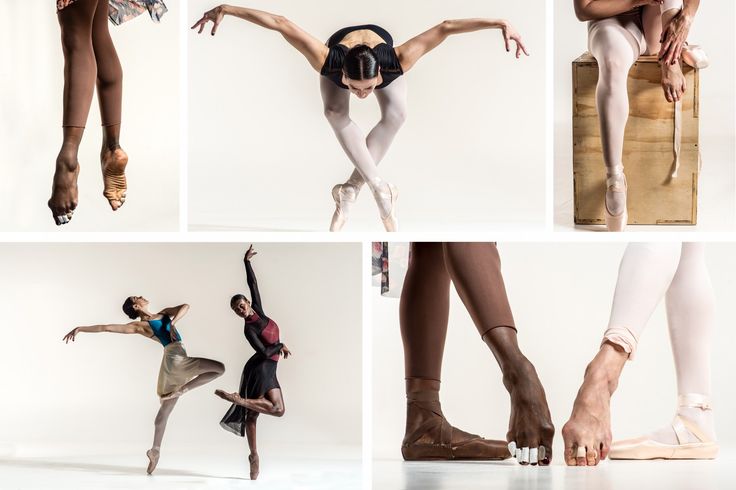
There is no need to rush during the movements, because the more thorough the preparation for each next step, the faster and easier it will be to master the next one. Rushing can lead to disappointment and injury. Therefore, in ballroom dancing, you need to focus on the result.
If you need an activator for Windows, then go to aktivator-windows-7.com. Here is detailed information on how to properly use this activator and what functions it has.
Similar entries:
Learn how to do pointe shoes? Instructions for beginners
Almost every woman, when she was a little girl, dreamed of becoming a ballerina and conquering peak after peak at the very tip of her fingers. And, it would seem, if in youth it was not possible to go to pointe shoes, then you can forget about a childhood dream? Not at all! There is a chance to learn to dance at your fingertips at any age. The main thing is a great desire!
What should adults do?
Before taking up ballet on your own or going to a teacher's studio, you need to get permission from a doctor. This is because the exercises that will be studied load the joints, as well as the spine. Also, such a load is dangerous for varicose veins, so keep in mind that the negative consequences of dancing must be prevented.
This is because the exercises that will be studied load the joints, as well as the spine. Also, such a load is dangerous for varicose veins, so keep in mind that the negative consequences of dancing must be prevented.
Usually in ballet studios and choreographic colleges students are put on pointe shoes only at the end of the first year, and every day is accompanied by intensive training. An adult person will need even more time to master the basic exercises. First of all, you need to properly stretch the muscles of the entire body, and then learn how to balance. To achieve these goals, complexes are made up of various gymnastic exercises, some power load in the form of shallow squats, as well as leg movements at the barre.
First, students hold with both hands, then learn to use one hand, and finally do all the exercises without the help of hands. The most common question is how old do you get on pointe shoes. And the answer is unequivocal - the sooner the better.
How to do pointe shoes at home?
In order to realize your sword, you need to take care that the muscles of the legs are sufficiently developed, as well as develop the instep of the foot. How to get on pointe shoes without pointe shoes? Training should start with the calf muscles, the most common walking at an accelerated pace is perfect here. Running is the next level. Start by choosing comfortable shoes so that walking is as enjoyable as possible, and over time, you can return to shoes with higher heels. Another available exercise is carried out right on the stairs. Stand on the step with your toes so that the heel does not touch the surface. In this position, you need to rise and fall to start about 30 times in 4 sets.
How to get on pointe shoes without pointe shoes? Training should start with the calf muscles, the most common walking at an accelerated pace is perfect here. Running is the next level. Start by choosing comfortable shoes so that walking is as enjoyable as possible, and over time, you can return to shoes with higher heels. Another available exercise is carried out right on the stairs. Stand on the step with your toes so that the heel does not touch the surface. In this position, you need to rise and fall to start about 30 times in 4 sets.
Foot Stretch
This step is best done under the supervision of an experienced professional. If you deal with this issue on your own, using videos and special literature, you can harm yourself, because each person is individual, and when training, one should take into account the peculiarities of health and capabilities. If you are just starting out training, you can try stretching your fingers with the help of someone.
To begin with, warm up your feet thoroughly by sitting on the floor, stretching your legs and asking an assistant to gently press on the arches of your feet until discomfort appears.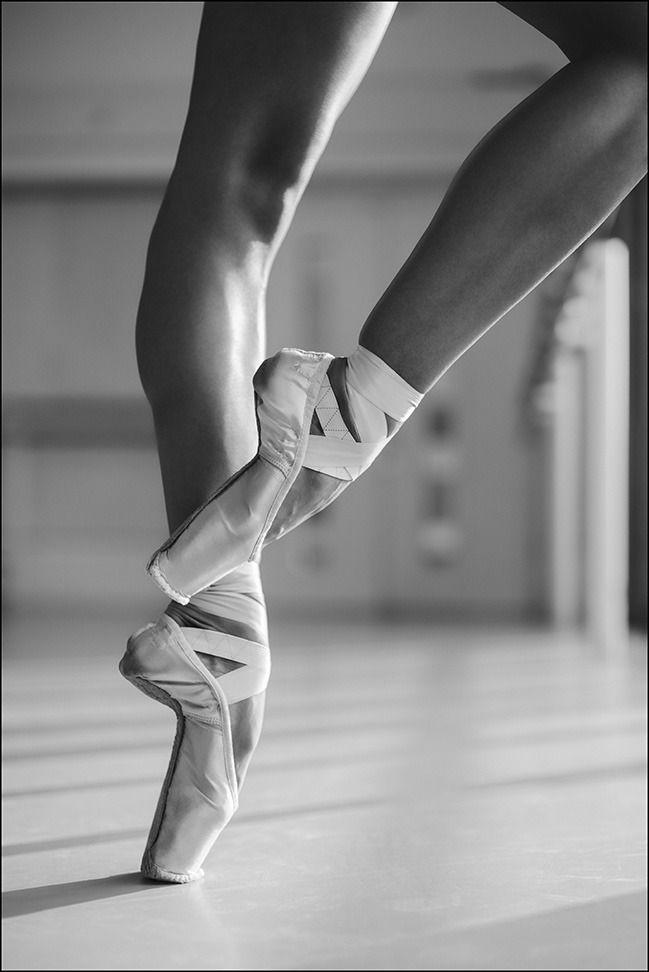 Be sure to keep your knees straight, after stretching your feet, pull them towards you. But more serious exercises can be performed only under the supervision of a professional, so as not to harm yourself, especially if a person decides that he is ready to do everything to get on pointe shoes.
Be sure to keep your knees straight, after stretching your feet, pull them towards you. But more serious exercises can be performed only under the supervision of a professional, so as not to harm yourself, especially if a person decides that he is ready to do everything to get on pointe shoes.
How to wear?
How to get on pointe shoes? The difference between ballerina shoes and ordinary shoes is in the main purpose. It lies in the fact that the foot should be fixed in a specific position during the dance. Therefore, the rules for wearing pointe shoes are special. To do this, you will need the following components: the pointe shoes themselves, a hammer, satin ribbons, liners, a needle and thread.
Manual
The first thing you should do when choosing pointe shoes is, of course, to try them on. The toe of the shoes is a kind of box, which should be hard and narrow, while the shoes should tightly wrap around the foot in order to fix the foot in the same position. If you neglect this rule, then soon the uneven load on the fingers will backfire with injuries and constant falls.
If you neglect this rule, then soon the uneven load on the fingers will backfire with injuries and constant falls.
Another important rule is that brand new pointe shoes are not to be put on straight away. First you need to prepare them for use. First of all, inspect the sock, if it is too hard, then you need to knead it with a hammer until it is soft enough. Also, in order for the foot to sit comfortably and securely in pointe shoes, you need to take care of special liners. They are silicone, fabric, paper. These options are considered not only the most convenient, but also suitable for repeated use. Pointe shoes are put on as follows:
- inserts must be placed in shoes;
- then wrap the ribbons around the ankle several times, tie them;
- remember that it is not recommended to tighten the tapes too tight, so that blood circulation is not disturbed;
- hide the ends of the ribbons so that they don't get in your way while you dance.
And most importantly, don't start dancing en pointe on your own, you definitely can't do it without the help of a specialist.





